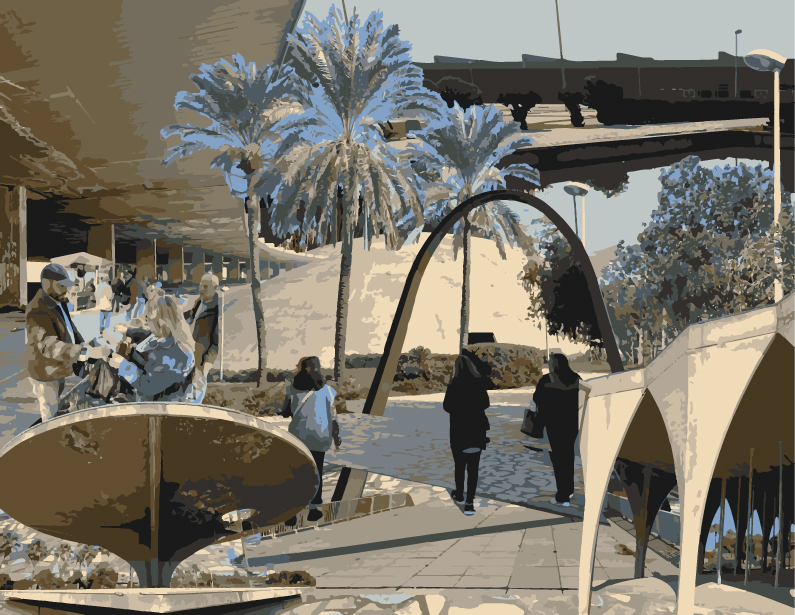UNESCO World Heritage sites listed “in Danger” is a call to action towards deteriorating areas of cultural significance. The approach of preserving physical areas of history is commonly thought of as reconstructing what once was and memorializing it towards the common day person, but not all sites share the same desire of memory and reconstruction. What UNESCO has categorized the Middle East and North Africa as the Arab States, twenty two of the twenty three sites under the World Heritage in Danger fall in this category not because of sole neglect, but from conflicts of war in the region. These sites become overwritten with painful memories, connotations, and remain as evidence to a traumatic period to the local community.
The Rachid Karami International Fair in Tripoli, Lebanon is one of the World Heritage In Danger sites, with remnants of war littered on the site physically and emotionally towards the surrounding people. Built by Oscar Niemeyer in 1962, it was intended to bring the Middle East and Lebanon into the age of Modernism. Physical site observations in varying seasons and local interviews have exposed the sites’ new purpose, serving as grounds to promenade through and exhibitions to occur in, accompanied by scars of war littered throughout the site. We see preservation as restoring the past, but what’s to be addressed in spaces scarred by discord? Is preservation of these sites the best option for these communities? Can we begin to approach preservation as utilization and healing over retaining a museum of misery that exists throughout all these sites? How can these areas be utilized to benefit the context of the surrounding environment, rather than creating an area of tourism to be reminded of a painful period? With majority of these sites sharing similar sensitive context as the fair, an adaptive reuse approach towards healing and building the community over prioritizing physical preservation of a space can rewrite the sites use and memory in modern day.
